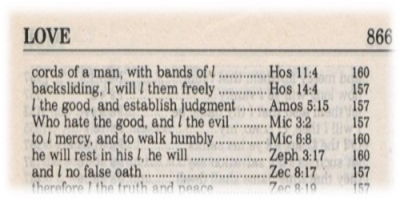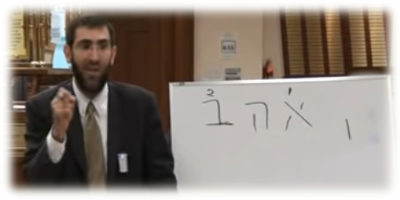A concordance and dictionary are the most important tools for any student of the Bible. A Bible concordance is an alphabetical index of the principal words found in the Bible. There are concordances for most of the major translations of the Bible, but the most common is Strong's Exhaustive Concordance which is keyed to the King James Version. The Concordance is divided up into two major parts; the concordance, which lists every English word in the Bible, with the exception of pronouns, articles and prepositions and the dictionary, which provides a definition to the Hebrew words behind the English translation.
A concordance and dictionary can be found in both book and electronic form. The following tutorial is designed for using the book form of a dictionary and concordance, but the methods used here can also be used with electronic versions such as e-sword.
Let's begin by looking at Psalm 2:11 from the King James Version of the Bible. In the English language the word "rejoice" means, "to be glad; take delight." But what we want to do is learn what the Hebrew word behind this English word actually means.
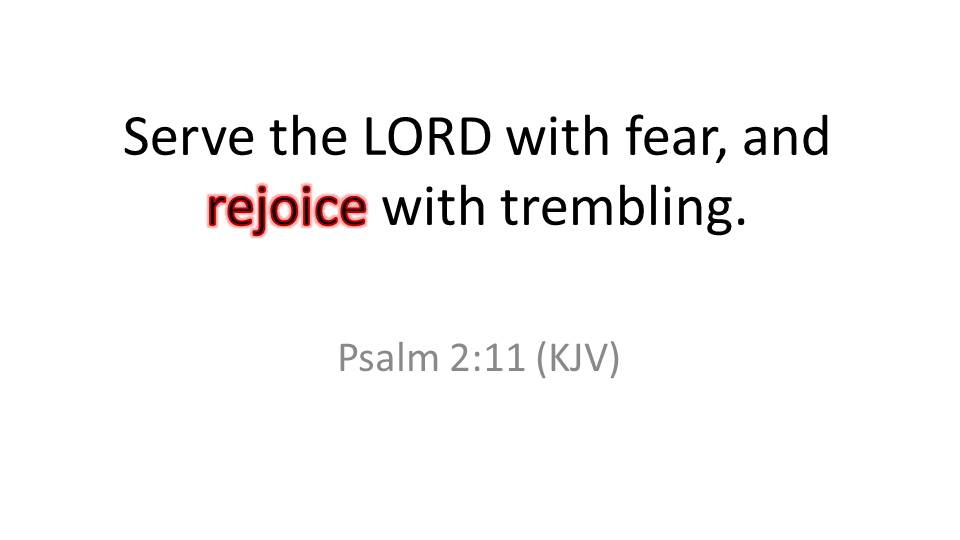
We will then look up the word "rejoice" in the concordance. The highlighted number identifies the number of times this word is found in the English Translation of the Bible.
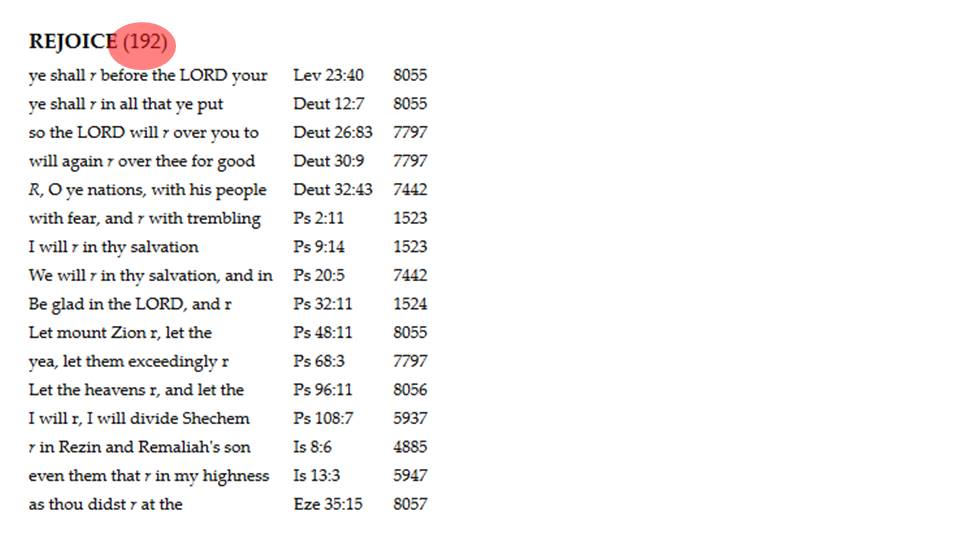
Below the word "rejoice" are all of the verses where the word "rejoice" is found. In this demonstration we are only looking at a handful of these verses and not all 192 occurrences. Also note that the letter "r" represents the word "rejoice."
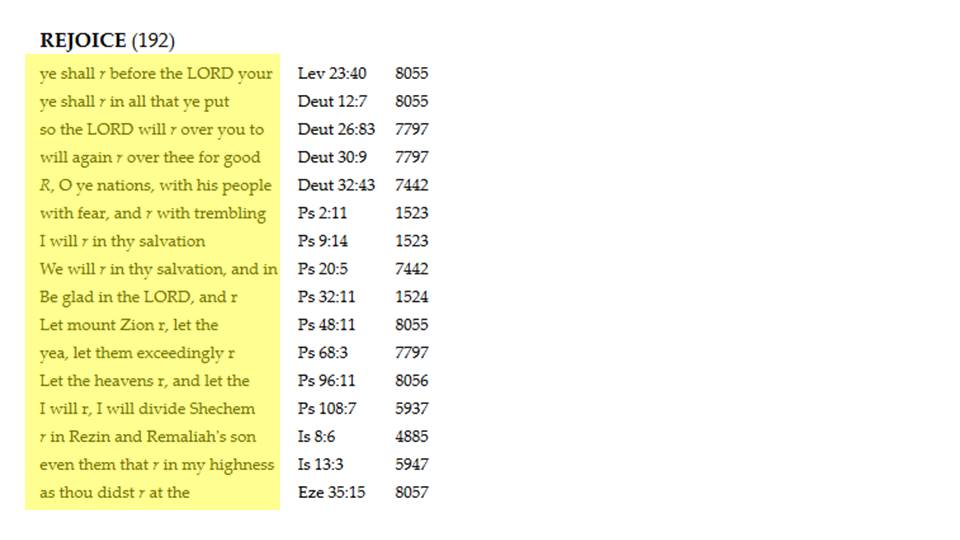
The next column is the book, chapter and verse of the passage with the word "rejoice" in it.
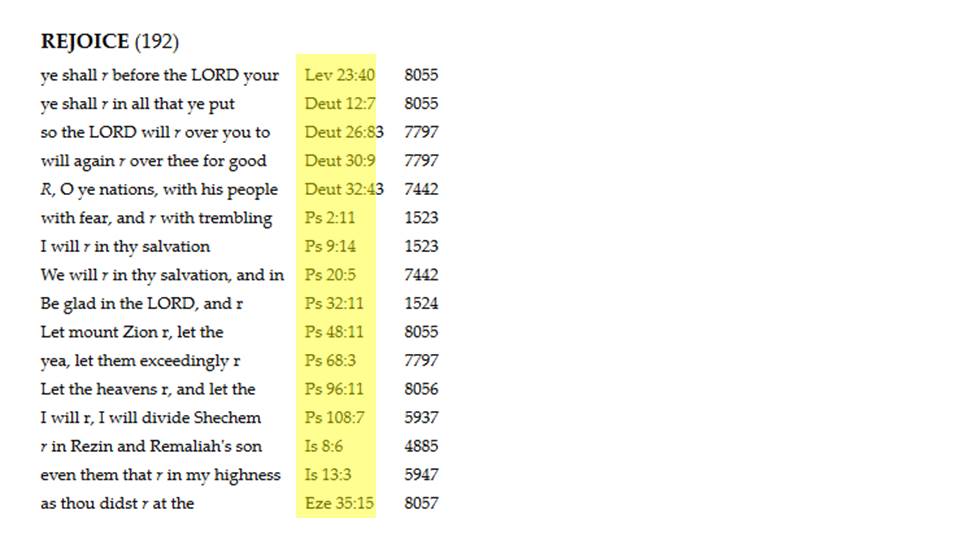
And the next column is a number (what is usually referred to as "Strong's number") that corresponds to a specific Hebrew word.
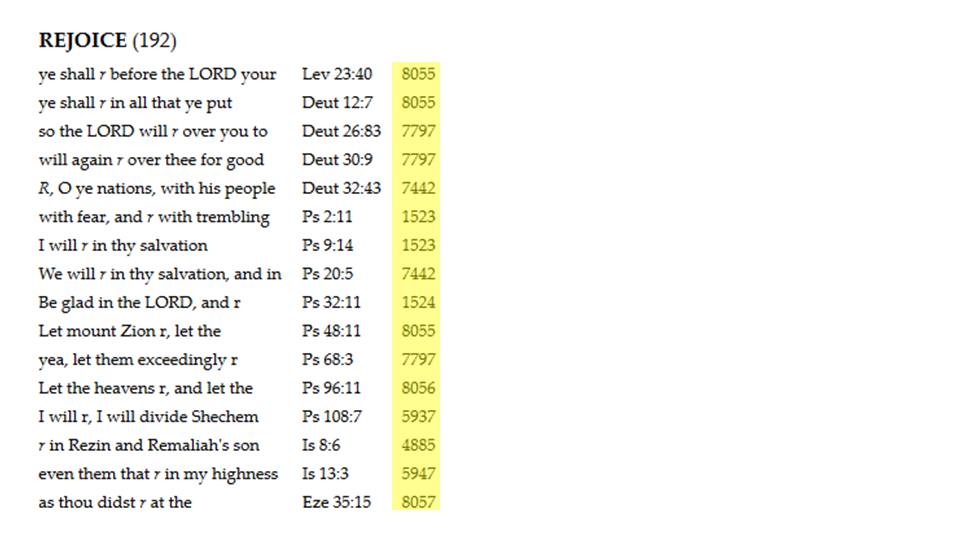
The word "rejoice" in Leviticus 23:40 is identified with Strong's number 8055. Next, we go to the dictionary section of Strong's and look up the word 8055 and here we find that the Hebrew word translated as "rejoice" in this verse is "samach," which is used 152 times in the Hebrew Bible and it is identified as a "primitive root." This is followed by Strong's definition of this word and note that it provides a very concrete meaning, "to brighten up." Next, we are given the various translations of this Hebrew word in the King James Bible and how many times it is used.
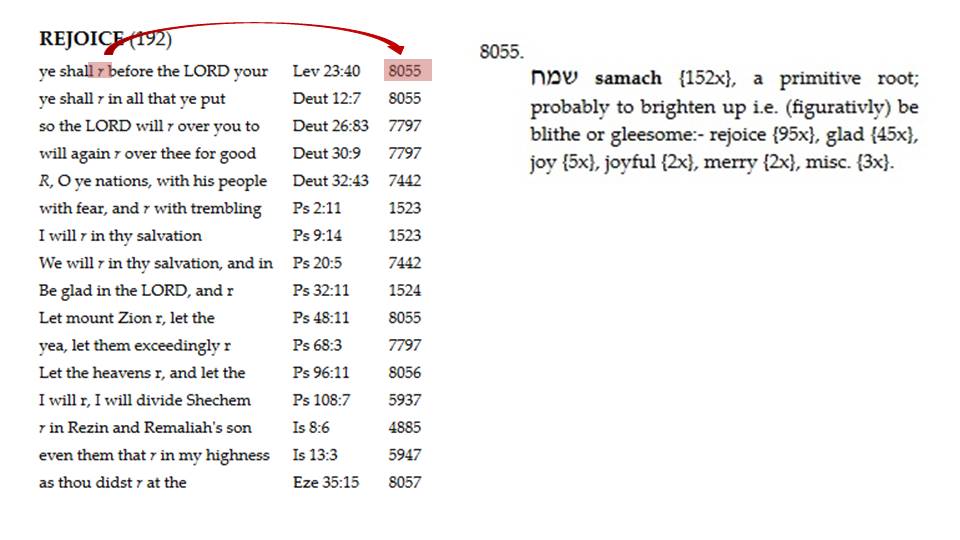
Next, let us take a look at Ezekiel 35:15. Here the word "rejoice" is identified as Strong's number 8057 and is the Hebrew word simchah. This noun is derived from 8056, the Hebrew word same'ach, which we see is found in Psalm 96:11. When we look up 8056 we find that it is derived from 8055, the Hebrew word samach, which we looked at previously.
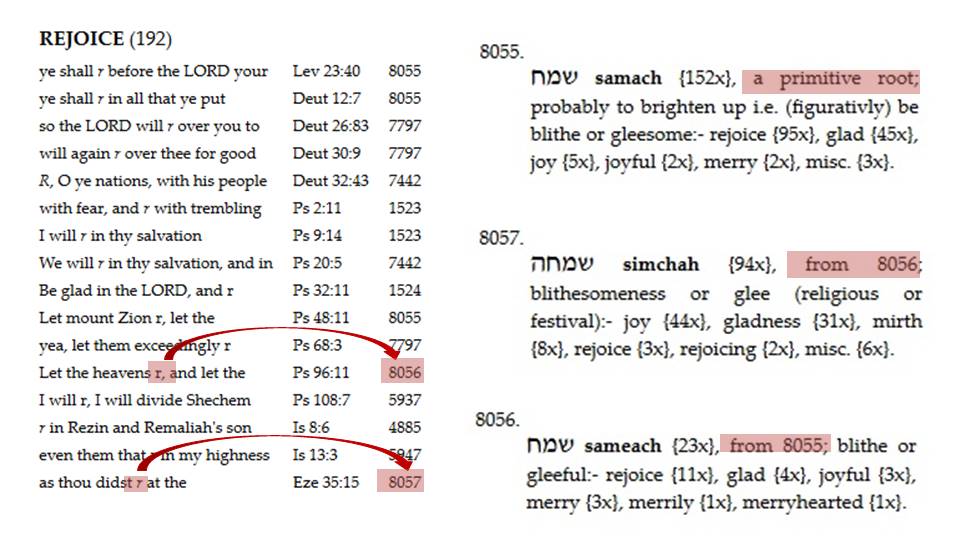
Notice that the definitions of 8057 and 8056 include "blithe" and "glee," abstract words. But as these nouns are derived from the root samach (Strong's number 8055), already identified with the concrete definition of being "bright," we can conclude that the nouns simchah and same'ach also have the concrete meaning of being "bright."
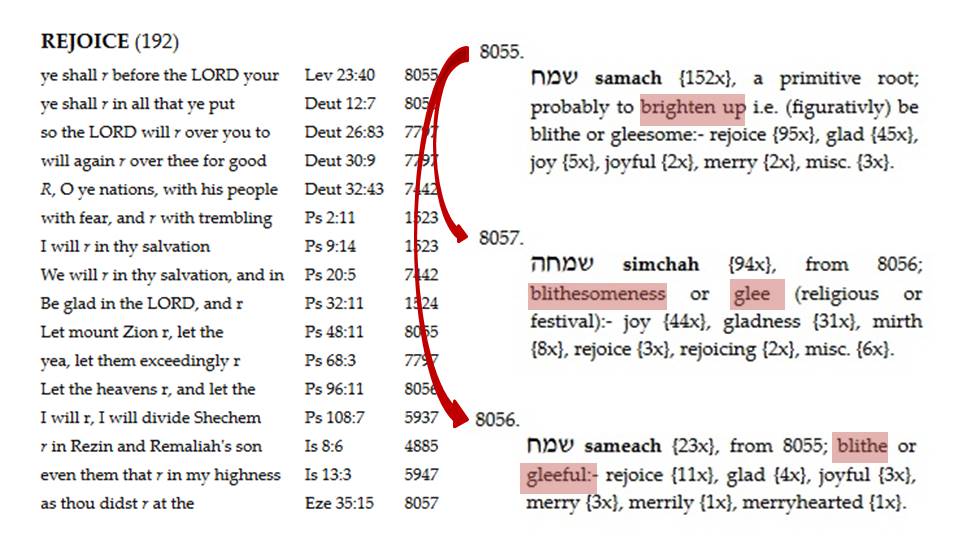
Now, let's go back to the verse that we began this lecture with.
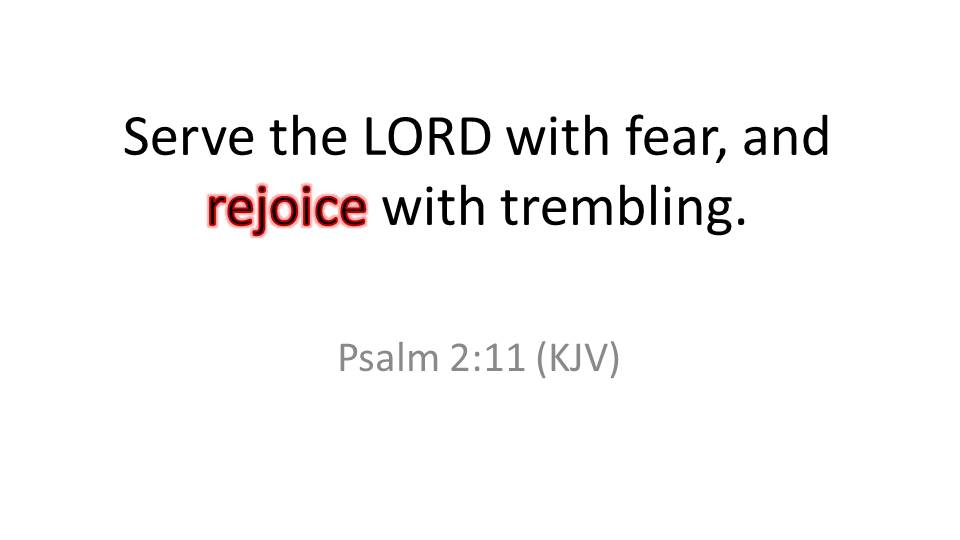
If we look up Psalm 2:11 in the concordance we find that the Strong's number associated with the word "rejoice" in this passage is 1523 and is the Hebrew word guwl, a primitive root meaning "to spin around."
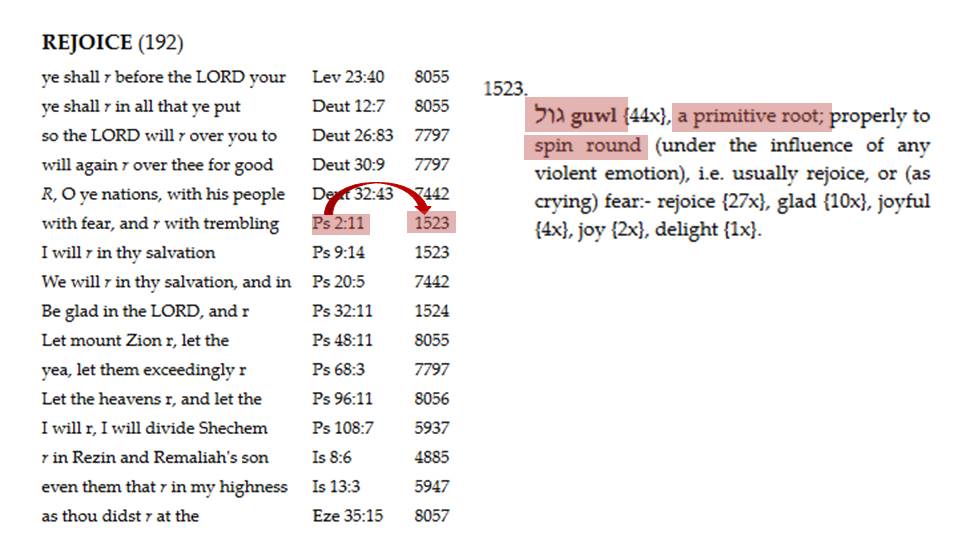
With this concrete definition we can then better translate this verse as follows.
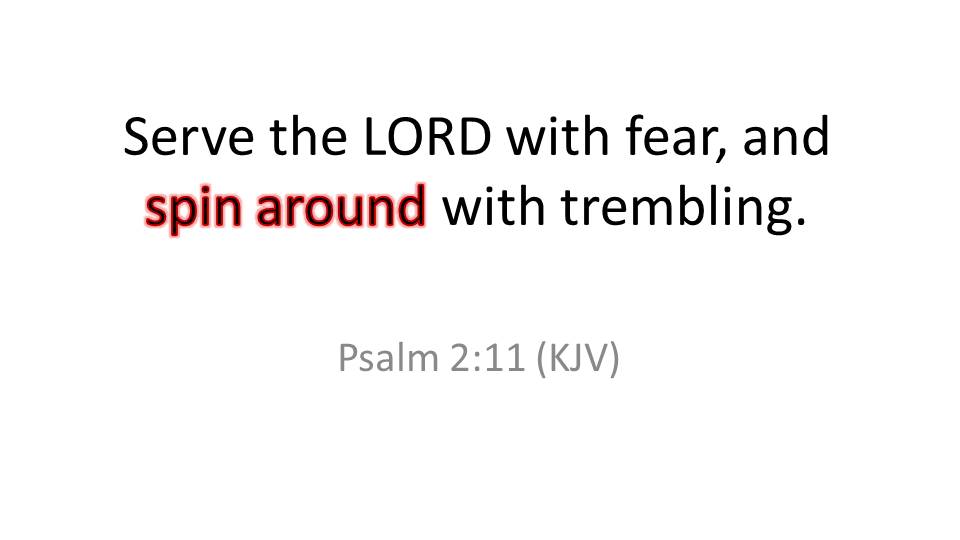
Let's take a look at another passage that includes a couple of the words that we have examined.
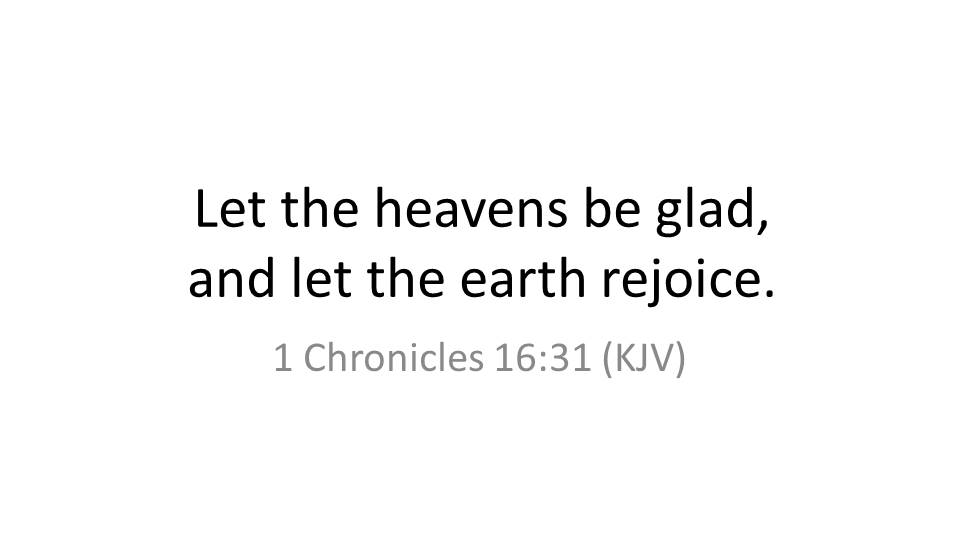
The Hebrew word behind the word "glad" is samach, which we found to mean "to brighten up." The Hebrew word behind the word "rejoice" is the word guwl, which we found to mean "to spin around."
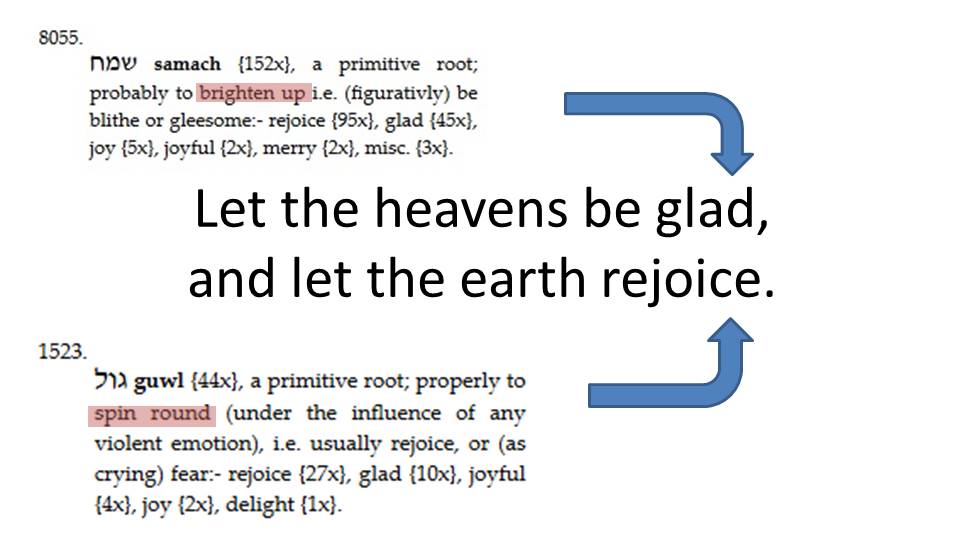
With this knowledge, we can now more accurately translate this passage as follows.
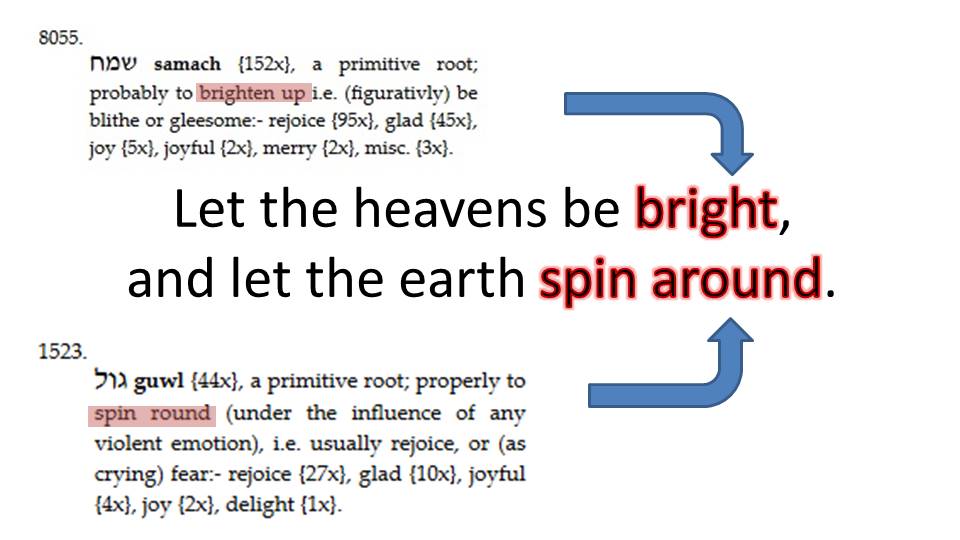
Doing a Hebrew word study with a Bible, Dictionary and Concordance is as simple as this and will greatly increase your understanding of the Biblical text. Give it a try and be amazed at the insights you will discover.
However, it must be understood that Strong's dictionary has many limitations which, if not known, can cause some problems. In Deuteronomy 15:6 we find the words "lend" and "borrow" and when we look both of these words up in Strong's we find that they are both the same Hebrew word - avat. How can the same Hebrew word be translated as lend and as borrow? What cannot be determined through Strong's is some of the nuances of Hebrew words. The Hebrew word avat literally means "to give a pledge" and is translated as borrow, but when written in the causative form it would literally be translated as "cause to give a pledge" or "to lend."
Someone once told me that the Hebrew word for Savior is yasha. I proceeded to correct them and say that it was moshia, but I was told that that is not what Strong's says. What they did not know is that in the Hebrew text the word for "savior" is the piel participle form of the verb yasha, which is moshia. Unfortunately, Strong's does not distinguish between the different verb forms.
Another problem with Strong's is that it was written over a hundred years ago and much about the Hebrew language has been learned since then. All this aside, it is still a great tool for investigating the Hebrew language behind the English translations.

Like what you’re discovering? Continue the journey from Bible reader to translator.
|



